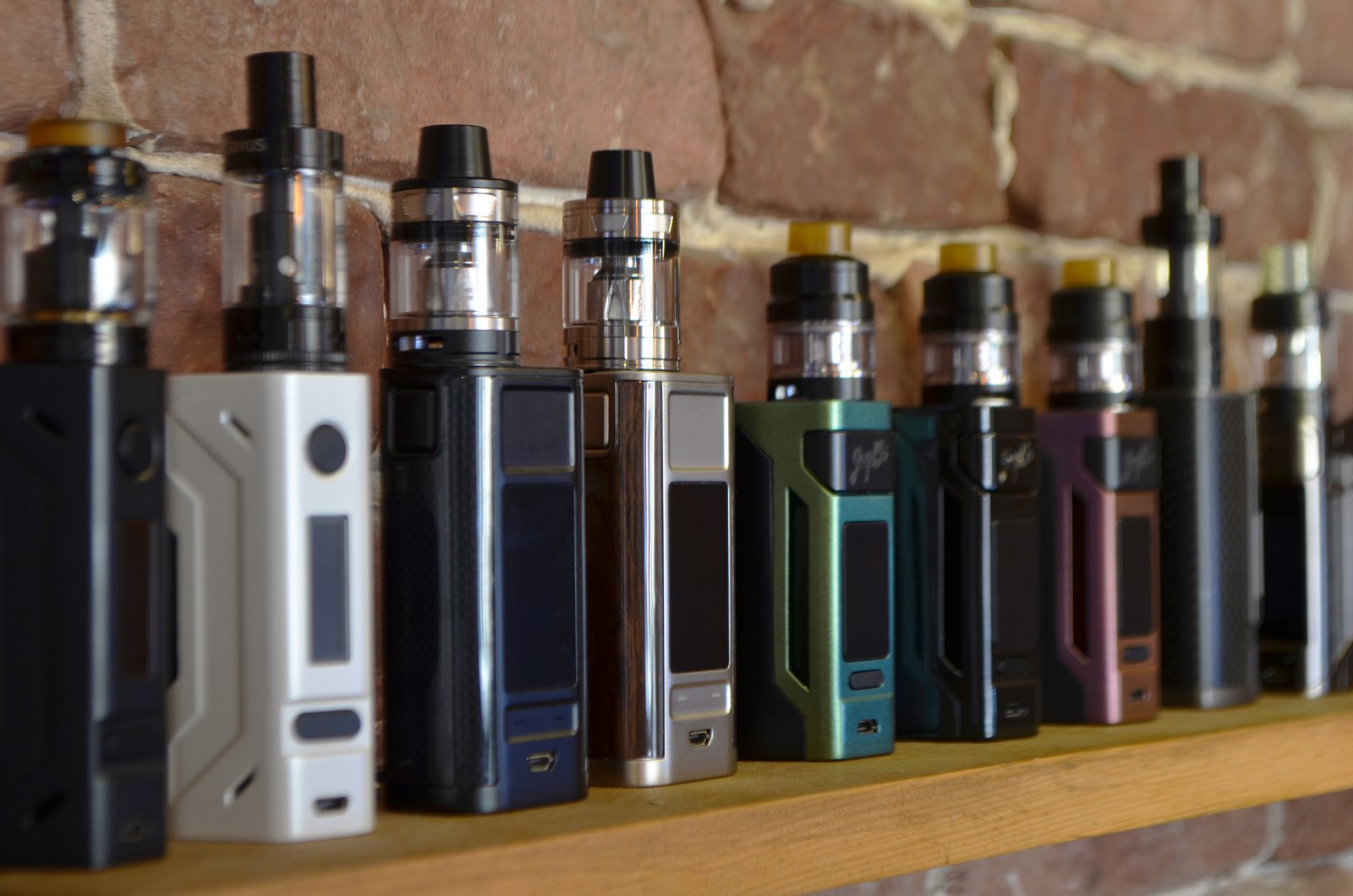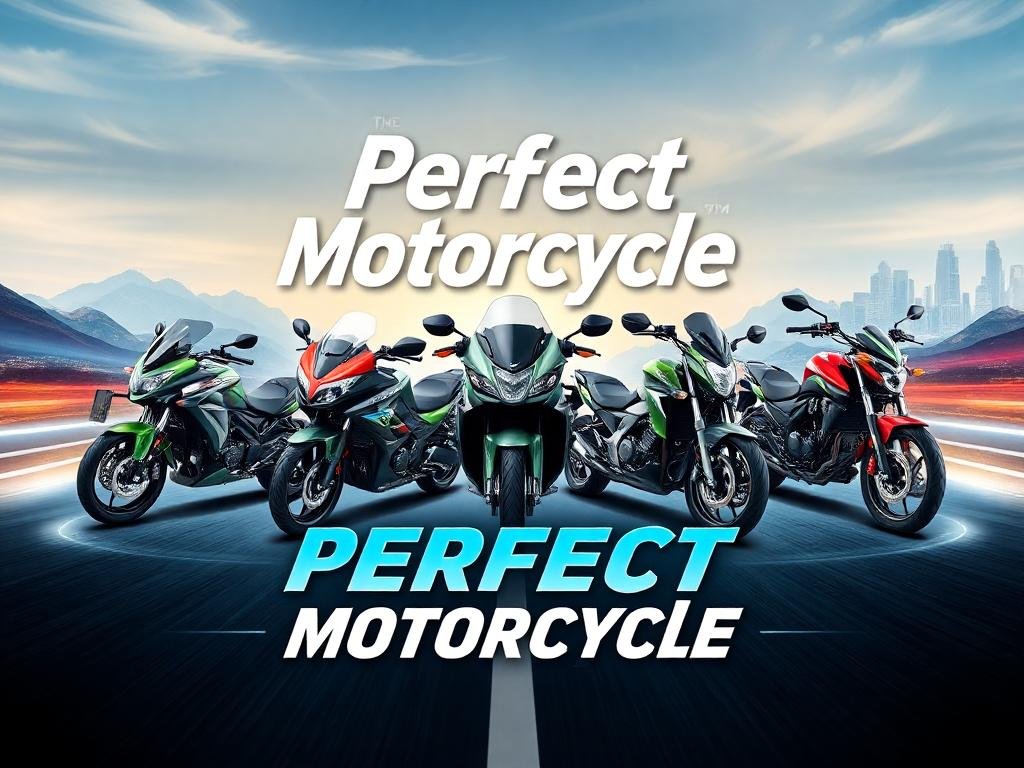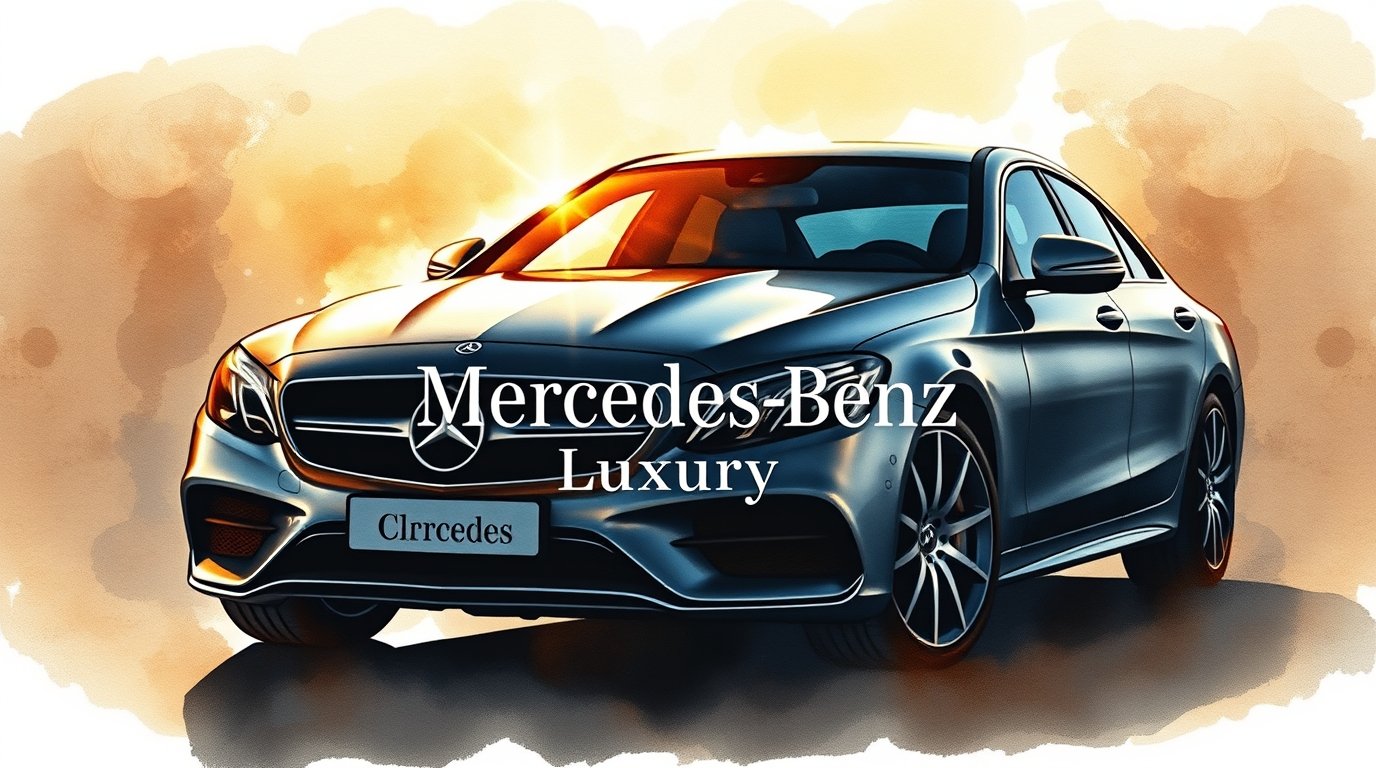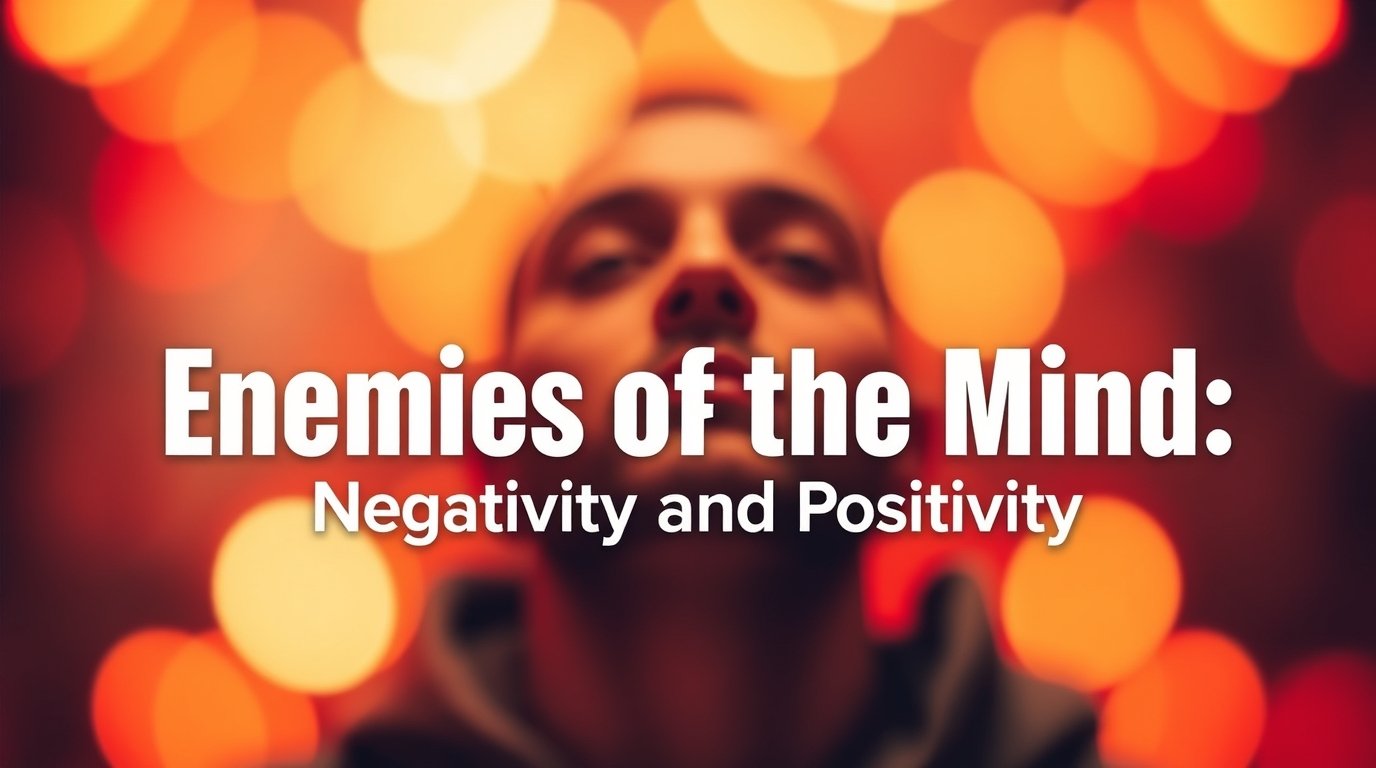
Learn to Ride a Motorcycle: A Beginner’s Guide to Safe Riding
Riding a motorcycle is exhilarating, but mastering the basics is crucial before hitting the road. Whether you’re practicing in a parking lot or gearing up for your first adventure, this guide walks you through the essential steps of learning to ride.
Start with Safety
Before anything else, ensure you’re geared up properly:
- Helmet, gloves, pants, and boots are non-negotiable.
- While jackets may feel optional in hot weather, prioritize safety over comfort.
Enrolling in a Motorcycle Safety Foundation (MSF) course is also highly recommended for hands-on experience.
Understanding Motorcycle Controls
Familiarize yourself with these critical controls:
Right-Hand Side
- Front Brake: Located on the right handlebar, this accounts for 95% of your braking power.
- Throttle: Twist to accelerate—remember, smoothness is key.
- Rear Brake: Found on the right foot peg, this assists with stopping but provides only 5% of braking power.
- Start/Stop Switch: Acts as an emergency cut-off for the engine.
- Ignition: The starter button brings the bike to life.
Left-Hand Side
- Clutch: Essential for shifting gears, it disengages the engine from the transmission.
- Gear Shifter: Operated by the left foot, it typically follows a “one down, five up” pattern.
- Kickstand: Always ensure it’s down when parking—modern bikes often won’t start if the kickstand is down.
Getting Comfortable with the Bike
Step 1: Waddle and Balance
- Sit on the bike with the kickstand up, and walk it forward using your legs.
- This helps you understand the bike’s weight and balance.
Step 2: Power Walk
- With the engine on and in neutral, lightly engage the clutch to enter the friction zone.
- Allow the bike to move gently without using the throttle.
Basic Riding Steps
Taking Off and Stopping
- Engage the clutch and shift into first gear.
- Slowly release the clutch while adding minimal throttle.
- To stop, pull in the clutch completely and use the brakes smoothly.
Feet on the Pegs
- Once comfortable with starts and stops, practice getting your feet up on the pegs while riding.
- Maintain low speeds and focus on balance.
Turning
- Begin with wide, sweeping turns in a parking lot.
- Use the handlebars for direction at slow speeds.
- For tighter right turns, manage the throttle carefully as it involves your dominant hand.
Advanced Techniques
Shifting Gears
- Shift up to second gear by pulling in the clutch and lifting the gear shifter.
- Release the clutch gently while adding a little throttle.
Using the Rear Brake
- Rear brakes provide stability during slow-speed maneuvers.
- Lightly press the rear brake to control your speed while turning or stopping.
Practice Makes Perfect
Spend ample time practicing in a safe environment. Here’s what to focus on:
- Slow-speed maneuvers, including turns and stops.
- Engaging the clutch and throttle smoothly.
- Shifting gears without abrupt movements.
Conclusion
Learning to ride a motorcycle is an art that requires patience and practice. Start slow, wear proper gear, and prioritize safety above all else. Treat motorcycling as a craft—always evolving and adapting to become a better, safer rider.
For the perfect beginner bike, consider a Ninja 400 or similar models. These bikes are designed with new riders in mind, offering a balance of power, agility, and ease of use.
FAQs About Learning to Ride a Motorcycle
Q1: What’s the most important control for beginners?
The clutch. Mastering the clutch is crucial for smooth starts and stops.
Q2: Can I practice riding without taking a course?
While this guide helps, an MSF course provides invaluable hands-on experience.
Q3: How long should I practice before riding on the road?
Spend at least 2-3 days practicing in a parking lot before venturing onto streets.
Q4: Why are rear brakes important for beginners?
They stabilize the bike during slow-speed maneuvers and prevent abrupt stops.
Q5: What’s a good beginner motorcycle?
The Ninja 400 is a popular choice, offering manageable power and easy handling.

Health and Safety | Discuss Research, Tips for Safe Vaping, and Debunk Myths around E-Cigarettes:
Vaping is one of those things that has been famous in the past few years. But there are still many questions in people’s minds about its health effects and safety. Some people consider it less harmful than traditional smoking, while some people consider it equally dangerous or even more harmful. This confusion is often due to misinformation and myths that spread through social media and word-of-mouth.
According to science and research, vaping can be a less harmful alternative to smoking, but that does not mean it is 100% safe. Every vaper needs to follow safe vaping practices, understand their device and e-liquids, and try to minimize any health risks. In this blog, we will talk about the health effects of vaping, common myths, safe vaping tips, rules, and scientific research so that you can understand the health and safety aspects of vaping in a better way.
If someone is using vaping to quit smoking or just randm tornado 15000 for hobby and relaxation, they need to understand safe vaping practices. In this blog, we will talk about health effects, myths, safety tips, rules, and future research so that you can enjoy vaping with an informed decision.
Understanding the Health Effects of Vaping
The health effects of vaping are being researched around the world, and the results are mixed. Some studies suggest that vaping may be a safer alternative to smoking, as it does not contain the tar and toxic chemicals found in cigarettes. But that does not mean that vaping is not harmful at all. E-liquids contain nicotine, which is addictive and can have health effects, especially if someone vapes too much. In addition to nicotine, some flavored e-liquids may contain harmful chemicals such as diacetyl, formaldehyde, and acetone, which may pose long-term health risks.
The short-term effects of vaping can be different for everyone. Some people experience throat irritation, dry mouth, or dizziness, while others vape without any issues. The long-term effects are not yet clear, as vaping is still a new concept and more studies are ongoing. Still, doctors and researchers say that if someone is a non-smoker, he or she should stay away from vaping, while it can be a less harmful alternative for smokers. It is important to adopt safe vaping practices and use good quality e-liquids and devices to minimize any health risks.
Common Myths and Misconceptions about Vaping:
Many myths and misconceptions about vaping confuse people. The most common myth is that vaping is as harmful as smoking. According to research, vaping does not contain the hazardous chemicals found in cigarettes, but that does not mean it is 100% safe. This may be a less harmful option for smokers, but it has no benefit for non-smokers.
Another popular myth is that vaping cause’s popcorn lung. This misconception is due to the diacetyl chemical found in some earlier flavored e-liquids. But now many reputable e-liquid companies have removed diacetyl from their products and there is no scientific proof that vaping can cause popcorn lung.
People also think that nicotine is only obtained from vaping or smoking whereas in reality nicotine is also found in some edible items like tomatoes and eggs. But in high doses, nicotine is addictive which can create long-term dependency. Myths and misinformation lead many people to consider vaping as unnecessarily dangerous or completely harmless, when the reality is that with moderation and responsible use it can be a comparatively safer option.
Tips for Safe and Responsible Vaping:
It is important to follow some important tips for safe vaping to minimize any health risks. First of all, it is important to use good quality e-liquids and devices. Low-quality and counterfeit e-liquids may contain harmful chemicals that can harm health. Always choose products from trusted brands and check the ingredients on the packaging.
Battery safety is also very important. Vaping devices run on lithium-ion batteries which can overheat or explode if not used properly. Always use original chargers, avoid overcharging and replace damaged batteries to avoid any safety issues.
Controlling nicotine consumption is also a part of safe vaping. If you are using vaping to quit smoking, it is better to gradually reduce nicotine levels. If you are a non-smoker, nicotine-free e-liquids may be the best option so that there is no risk of addiction.
Following vaping etiquette in public places is also a part of responsible vaping. Vaping is not allowed everywhere, and the comfort of other people should also be taken into account. For safe and responsible vaping it is important that you consciously manage your devices, e-liquids and habits so that it is a positive experience.
Vaping Regulations and Public Health Policies:
Vaping regulations vary across countries and these policies are frequently updated. Many countries have accepted vaping as an alternative to smoking cessation, while some have imposed strict bans or nicotine restrictions. Countries such as the USA and the UK have regulated e-liquids and devices available, while countries such as India and Brazil have complete bans on vaping.
Health organizations also have different stances on vaping. According to Public Health England, vaping is 95% less harmful than smoking and may be a better option for smokers. However, the WHO (World Health Organization) still considers it controversial and stresses the need for more research. Regulations are once again focused on underage vaping and flavored e-liquids, as some say fruity and candy flavors attract new people to vaping.
Vaping regulations may become even stricter in the future, particularly regarding flavors and nicotine levels. However, vaping is being promoted in some countries as a harm reduction strategy to provide safer alternatives for smokers. The purpose of the regulations is to discourage vaping for non-smokers but provide safer options to smokers.
The Future of Vaping and Scientific Research:
The future of vaping will depend on scientific research and technology. Research so far suggests that vaping may be a less harmful alternative to traditional smoking, but studies are still ongoing on its long-term health effects. Some new research is exploring the effects of vaping on the lungs and cardiovascular system to see if there are any hidden risks.
Technology is also making vaping more advanced. Smart vaping devices are being introduced that track nicotine consumption and provide overheating and battery safety features. Temperature control and AI-powered vapes are also coming to the market, making vaping even safer and more personalized.
In the future, vaping may be incorporated into healthcare and harm reduction programs if a more scientific consensus is developed. But stricter regulations and policies are also expected that will restrict vaping to youth and non-smokers. Overall, the future of vaping will depend on scientific evidence, technology and government policies that will determine whether it is a beneficial option in the long-term.

Finding the Perfect Motorcycle: An Survey of Value and Variety
Choosing the right motorcycle can be overwhelming, given the countless options and unique features offered by each model. From trail bikes to tourers, sporty options to versatile dual-sports, there’s something for everyone. This guide dives into some of the most iconic motorcycles and what makes them stand out in terms of performance, reliability, and value.
The Legendary Honda XR Series: Masters of the Dirt
The Honda XR series redefined dirt biking in the 1970s and 1980s, setting the gold standard for four-stroke dirt bikes in a two-stroke-dominated market.
Why the XR Stands Out
- History of Innovation: Launched in 1979, the XR series offered power, reliability, and low maintenance.
- Durability: Known for its indestructible build and long-lasting performance.
- Wide Variety: From 50cc to 650cc, the XR lineup offers something for everyone.
Buyer’s Tips
- Avoid the XR models with “L” suffixes—they are detuned for street use.
- Be cautious of early models (1979-1980) with 23-inch front wheels, as replacement parts are rare.
Honda Gold Wing: The Ultimate Touring Machine
The Honda Gold Wing is a top-tier tourer that combines luxury and reliability. Known for its advanced features and comfort, it remains a favorite among long-distance riders.
What Makes the Gold Wing Special
- Loaded with Features: From inbuilt passenger communicators to air suspension and CB radios, the Gold Wing is packed with tech.
- Longevity: With proper care, these bikes can last over 160,000 kilometers, offering decades of performance.
How to Find the Perfect Gold Wing
- Look for models with comprehensive maintenance records or collector plates.
- Prioritize models with air suspension and sound systems for the ultimate touring experience.
Suzuki Gladius: The Hidden Gem of Sport Bikes
Often overshadowed by its predecessor, the SV650, the Suzuki Gladius (SFV650) is an underrated sportbike offering outstanding performance at an affordable price.
Features That Shine
- Engine: A 645cc V-twin with MotoGP-inspired cylinder lining.
- Upgrades: Improved throttle bodies and fuel atomizers for smoother performance.
- Adjustability: Preload-adjustable front forks for enhanced handling.
Why Consider a Gladius?
While the SV650 is a racing favorite, the Gladius offers a more approachable price point without compromising on quality.
Kawasaki KLR650: Indestructible Adventure Machine
The KLR650 has a reputation as an unkillable dual-sport motorcycle, perfect for adventurers and off-road enthusiasts.
Unbeatable Reliability
- Indestructible Build: KLRs are known for their ability to withstand rough terrains and years of abuse.
- Affordable Parts: Replacement components are inexpensive and widely available.
Buyer’s Advice
- Look for stock models to avoid poorly executed modifications.
- Verify that the “doohickey” (balancer chain tensioner) has been upgraded.
Yamaha V-Star: A Forgotten Cruiser Bargain
Once a competitor to Harley-Davidson, the Yamaha V-Star offers high-quality performance and componentry at a fraction of the price.
What Makes V-Star Special
- Superior Build: Reliable V-twin engines with timeless cruiser styling.
- Affordable Luxury: Regularly ridden models are a safer purchase than neglected garage-kept bikes.
What to Watch For
Avoid heavily customized models with chopped frames or suspension—they’re often less reliable than stock versions.
Conclusion
Whether you’re drawn to the rugged adventure of the KLR650, the refined luxury of the Gold Wing, or the sportiness of the Gladius, there’s a perfect motorcycle for every rider. Consider your priorities—performance, reliability, or versatility—and find the machine that best suits your needs.
FAQs About Motorcycles
Q1: Why is the Honda XR series legendary?
The XR series set benchmarks for durability and reliability in dirt biking, offering unmatched performance for over two decades.
Q2: Is the Honda Gold Wing suitable for touring?
Absolutely! Its advanced features and unparalleled comfort make it one of the best touring bikes available.
Q3: Why is the Suzuki Gladius underrated?
Despite its exceptional features and performance, the Gladius was overshadowed by the SV650, earning it a reputation as a hidden gem.
Q4: What makes the KLR650 so reliable?
Its rugged build, affordable parts, and long-standing reputation make it a dual-sport legend.
Q5: Should I buy a Yamaha V-Star for cruising?
Yes, especially if you find a well-maintained, stock model—it offers luxury and performance at a great price.

6 Best Mercedes-Benz Cars to Watch For in 2025-2026
The Mercedes-Benz lineup isn’t just about cars; it’s a statement. A masterpiece of luxury, power, and cutting-edge technology designed for those who demand the best. From stunning SUVs to sophisticated sedans, Mercedes-Benz has something extraordinary for everyone.
Mercedes-Benz GLS
The 2025 Mercedes-Benz GLS is more than an SUV; it’s a testament to luxury and performance. Its striking grille and sleek LED lighting command attention the moment it hits the road. Inside, you’ll find premium materials, a massive dual 12.3-inch infotainment system, and enough space for seven passengers to ride in absolute comfort. Massaging seats, a Burmester 3D surround sound system, and ambient lighting create a first-class driving experience.
Under the hood, the GLS delivers serious power:
- GLS 450: 3.0L turbocharged inline-6 mild hybrid engine producing 362 horsepower.
- GLS 580: 4.0L V8 engine pushing 483 horsepower.
- AMG GLS 63: 603 horsepower, taking luxury performance to the next level.
With 4MATIC all-wheel drive and adaptive air suspension, every drive feels effortless. The price starts at $88,200 for the GLS 450, $113,000 for the GLS 580, and $145,000 for the AMG GLS 63.
Mercedes-Benz GLE
The 2025 GLE perfectly blends technology, elegance, and power. It features a 2.0L turbocharged 4-cylinder engine generating 255 horsepower and an optional 3.0L inline-6 with 362 horsepower. Paired with Mercedes’ signature 9-speed automatic transmission, the GLE offers impressive performance.
Inside, the tech lover’s dream comes alive with a 12.3-inch touchscreen, Apple CarPlay, Android Auto, and a high-end sound system. Safety tech like adaptive cruise control and lane-keeping assist come standard. Starting at just $60,000, the GLE delivers serious luxury without breaking the bank.
Mercedes-Benz E-Class
The 2025 E-Class is redefining the luxury sedan segment. Sleek, sophisticated, and packed with tech, it offers two powertrains:
- E 350: 2.0L turbocharged inline-4 with 255 horsepower.
- E 450: 3.0L inline-6 with 375 horsepower.
Inside, the cabin is a masterpiece with high-end materials, customizable ambient lighting, and the latest MBUX infotainment system featuring dual 12.3-inch screens. The starting price is $60,000 for the E 350 and $73,000 for the E 450. The E-Class remains the go-to luxury sedan for those who demand the best.
Mercedes-AMG CLE 53 Coupe
For those who crave performance, the 2025 AMG CLE 53 Coupe is built to thrill. With a 3.0L turbocharged inline-6 hybrid engine churning out 429 horsepower and 413 lb-ft of torque, this coupe launches from 0 to 60 mph in just 4.2 seconds. It features an aggressive front grille, sleek aerodynamic lines, and an interior designed for driving enthusiasts. AMG-specific seats, carbon fiber details, and a high-tech infotainment system make this a performance car with luxury at its core. Priced at $75,000, it’s an absolute powerhouse.
Mercedes-Maybach S-Class
For those who demand nothing but the best, the 2026 Mercedes-Maybach S-Class redefines ultra-luxury. Powered by a 4.0L V8 hybrid engine with 603 horsepower, this sedan offers an unmatched driving experience. Inside, it’s a sanctuary with hand-stitched leather, exquisite wood trims, reclining rear seats with massage functions, and even a built-in champagne cooler. Cutting-edge tech includes an OLED infotainment screen, augmented reality navigation, and level three autonomous driving. The price is a staggering $220,000, but for those who can afford it, it’s worth every penny.
Mercedes-Benz G-Class
The 2025 Mercedes G-Class is an icon, a legend, and now more advanced than ever. With a 4.0L twin-turbo V8 delivering 577 horsepower and a plug-in hybrid option offering up to 60 miles of electric range, the G-Wagon stays true to its roots while embracing the future. Its signature boxy design, three locking differentials, and luxurious high-tech interior make it the ultimate off-road luxury SUV. The price starts at $140,000 for the base model, while the AMG G63 can exceed $180,000.
Conclusion
From SUVs to sedans, from power to luxury, Mercedes-Benz continues to lead the way in automotive excellence. Which one of these beasts is your favorite? Let us know in the comments, and if you love high-performance and luxury car content, don’t forget to subscribe and hit that bell icon for more updates.
Frequently Asked Questions (FAQs)
Q1: What is the starting price of the 2025 Mercedes-Benz GLS 450?
A1: The starting price of the 2025 Mercedes-Benz GLS 450 is $88,200.
Q2: What engines are available for the 2025 Mercedes-Benz E-Class?
A2: The 2025 Mercedes-Benz E-Class offers two engine options: a 2.0L turbocharged inline-4 with 255 horsepower and a 3.0L inline-6 with 375 horsepower.
Q3: How fast can the AMG GLS 63 accelerate from 0 to 60 mph?
A3: The AMG GLS 63 can accelerate from 0 to 60 mph in just 4.2 seconds.
Q4: What unique features does the Mercedes-Maybach S-Class offer?
A4: The Mercedes-Maybach S-Class offers hand-stitched leather, exquisite wood trims, reclining rear seats with massage functions, a built-in champagne cooler, an OLED infotainment screen, augmented reality navigation, and level three autonomous driving.
Q5: What is the electric range of the plug-in hybrid option for the 2025 Mercedes G-Class?
A5: The plug-in hybrid option for the 2025 Mercedes G-Class offers up to 60 miles of electric range.

The Dating Advice You’ll Ever Need
Do you have trouble navigating the dating world? Do you wish you could find your perfect someone without all the complications of dating? Well, you’re not alone. The dating scene can be frustrating, but a bit of advice can help get the ball rolling again. Here is a list of the only dating advice you’ll ever need.
1. Respect is Key
Respect is fundamental in any relationship. Healthy couples trust each other’s intentions and communicate respectfully. If you notice disrespect from your date, address it or recognize that it might not work out. Similarly, remember to respect your date as well.
2. Allow Intimacy to Progress Naturally
While honesty is important, revealing too much too soon can add unnecessary pressure. Allow intimacy to progress naturally. Take it slow and reveal your feelings gradually.
3. Don’t Limit Yourself to One Type
Your perfect partner might not meet all your criteria. Just because your date doesn’t share all your interests doesn’t mean they can’t be the perfect match. Keep an open mind and you might be surprised.
4. Communication is Key
Communication and respect go hand in hand in successful relationships. Be honest about who you are and how you feel. If something makes you uneasy, express it. If you enjoyed your date, let them know.
5. Focus on Who You Are Now
Early in dating, focus on the person you are now rather than your past. Show them who you’ve become. There will be time later to share your past experiences.
6. Don’t Alter Who You Are
Be authentic. Don’t pretend to be someone you’re not just to fit your date’s expectations. Authenticity attracts the right people.
7. Don’t Control the Conversation
Show genuine interest in your date. Don’t spend the entire time talking about yourself. Ask questions and listen to their responses. It’s about mutual compatibility.
8. Be with Someone for the Right Reasons
Evaluate why you’re with your partner. Are you truly happy around them? Avoid being in a relationship due to external pressures. Focus on genuine happiness and compatibility.
Conclusion
Which advice will you take? Are you lost in the dating world or have you found your special someone? Share with us in the comments below. If you found this post helpful, don’t forget to like and share it with someone who may need some dating tips.
FAQs
Why is respect important in a relationship?
Respect is fundamental for trust and effective communication, which are the pillars of a healthy relationship.
How can I allow intimacy to progress naturally?
Take it slow, express your feelings gradually, and avoid revealing too much too soon.
Why should I not limit myself to one type?
Your perfect partner might not meet all your criteria, and being open-minded can help you find unexpected connections.
How can I improve communication in dating?
Be honest about who you are and how you feel. Express any unease and let your date know if you enjoyed the time together.
Why is it important to be authentic?
Authenticity attracts the right people and ensures that you build relationships based on who you truly are.

Neuroscientific | Leveraging Dopamine for Hyperfocus
Dopamine, the neurochemical often linked to distraction, overeating, and time-wasting on platforms like TikTok, can actually be harnessed to propel you into hyperfocus and productivity. In this blog post, I’ll explore how you can leverage your dopaminergic system to enhance focus and achieve a state of flow. As the CEO of Flow Research Collective, where we use neuroscience to help professionals access flow states, I’ll share practical techniques to optimize your dopamine levels for peak performance.
Understanding Dopamine
The Dopamine Mechanism Dopamine is a neurotransmitter that drives our desires and motivations. It plays a crucial role in reward, pleasure, and focus. The thrill we get from accomplishments and even addictive behaviors like scrolling social media can be attributed to dopamine.
The Myth of Dopamine Detox Scientifically, you can’t detox dopamine since it’s an essential neurochemical. Instead, the goal is to resensitize dopamine receptors, making you more sensitive to its effects. Low sensitivity requires high stimulation to feel rewarded, while high sensitivity requires less.
The Silent Zen Retreat Experience
A Personal Journey I once attended a silent Zen meditation retreat, where I spent 16 hours a day in silence, meditating and eating bland food. After the retreat, I noticed that mundane tasks felt rewarding, and my brain had been resensitized to find work engaging and satisfying.
The Dopamine Resensitization During the retreat, my brain’s dopamine receptors resensitized, allowing me to find joy in simple tasks. This experience highlighted the importance of resensitizing dopamine receptors to boost focus and productivity.
Strategies for Dopamine Resensitization
1. Take Boring Breaks Instead of engaging in stimulating activities during breaks, opt for boring activities like staring at a wall, napping, or light exercise. This resets your dopamine levels, making your work feel more rewarding in comparison.
2. Inhabit the In-Between Moments Avoid reaching for your phone during idle moments. Use this time to practice mindfulness or simply sit in silence. This reduces unintentional information consumption and increases your sensitivity to dopamine.
3. Focus on One Thing at a Time Multitasking desensitizes dopamine receptors and scatters attention. Train your brain to focus on one task at a time, whether it’s eating, working, or conversing. Embrace life as a series of singular activities to enhance focus and flow.
The Neuroscience Behind Focus
Default Mode Network (DMN) vs. Task Positive Network (TPN) When you’re not engaged in a task, the DMN is active. When focused, the TPN takes over. Rapidly shifting between these networks can enhance your ability to engage in focused attention, leading to flow states.
Training Focus By reducing distractions and practicing single-tasking, you can train your brain to switch from the DMN to the TPN more efficiently. This increases dopamine-fueled focus and enhances productivity.
Conclusion
Mastering your dopaminergic system involves taking boring breaks, inhabiting in-between moments, and focusing on one task at a time. These techniques can help you resensitize your dopamine receptors, leading to heightened focus, productivity, and access to flow states. Turn your work into play and gain a competitive advantage by leveraging dopamine for peak performance.
FAQs
Q1: What is dopamine and why is it important?
A1: Dopamine is a neurotransmitter that drives desires and motivations. It plays a crucial role in reward, pleasure, and focus, making it essential for productivity and achieving goals.
Q2: What is dopamine resensitization?
A2: Dopamine resensitization involves resetting dopamine receptors to make them more sensitive to dopamine, allowing you to feel rewarded with less stimulation and enhancing focus and productivity.
Q3: How can taking boring breaks improve focus?
A3: Boring breaks reset dopamine levels, making your work feel more rewarding in comparison. Activities like wall-staring, napping, or light exercise are effective for this purpose.
Q4: Why should I avoid multitasking?
A4: Multitasking desensitizes dopamine receptors and scatters attention. Focusing on one task at a time enhances reward sensitivity and improves focus and productivity.
Q5: What are the Default Mode Network (DMN) and Task Positive Network (TPN)?
A5: The DMN is active when not engaged in tasks, while the TPN takes over during focused activities. Shifting efficiently between these networks enhances focused attention and flow states.
Q6: How can I train my brain to focus better?
A6: Reduce distractions, practice single-tasking, and take boring breaks to train your brain to switch from the DMN to the TPN efficiently, increasing dopamine-fueled focus and productivity.
Q7: What are some practical techniques to enhance focus?
A7: Techniques include taking boring breaks, inhabiting in-between moments without reaching for your phone, and focusing on one task at a time. These strategies resensitize dopamine receptors and improve productivity.

Enemies of the Mind: Negativity and Positivity
Life is full of challenges and negative aspects. It’s important to recognize them but also to see the positive side. In this blog post, we will explore how to battle the enemies of the mind, especially pessimism, and embrace a balanced approach to life.
The Battle with Pessimism
Pessimism: Pessimism tries to make you believe that the glass is only half empty. However, it’s essential to educate pessimism and recognize that the glass is also half full.
Be in Charge of Your Mind: Take control of your thoughts and be in charge of your own destiny. Educate pessimism and remind it that while the glass is half empty, it’s also half full.
The Dual Nature of Love and Hate
Love and Hate Like Parents: In the summertime, learn to love like a mother and hate like a father. A father protects his family fiercely, while a mother nourishes and gives life.
Example of Mama Bear: A story of a man who took a flash picture of a mama bear and her cub illustrates the protective nature of a mother. The bear’s reaction shows how strongly parents protect their loved ones.
Nourishing and Protecting Your Values
Nourish Like a Mother: Nourish your values, family, organization, and responsibilities. Take care of what is valuable to you.
Battle with Enemies: Take up the sword against anything that threatens your values. Whether it’s worry or threats, fight back like the white corpuscles in your bloodstream that protect the body.
Harvesting and Taking Responsibility
Harvest Time: In the harvest season, take full responsibility for the results of your efforts. Don’t complain; instead, acknowledge your hard work and take pride in your achievements.
No Apologies for Success: If you have done well, offer no apologies. You deserve the success you’ve earned through your hard work and dedication.
Conclusion
In conclusion, life is a balance of nourishing the positive and battling the negative. By recognizing the duality of pessimism and optimism, love and hate, and by taking responsibility for your achievements, you can create a fulfilling and successful life. Remember, you have the power to shape your destiny and protect what is valuable to you.
FAQs
Q1: How can I educate myself to balance pessimism and optimism?
Start by acknowledging both sides of a situation. Practice gratitude and positive thinking, but also recognize and address challenges.
Q2: How do I protect my values and responsibilities effectively?
Set clear boundaries and prioritize what is important to you. Take action against anything that threatens your values.
Q3: What steps can I take to achieve life balance?
Regularly reflect on your life, spend quality time with loved ones, and take time for yourself to recharge and grow.
Q4: How do I handle complaints and negativity during the harvest season?
Accept responsibility for your actions and focus on the positive outcomes. Avoid complaining and instead, find solutions to challenges.
Q5: Why is it important not to apologize for success?
Success is a result of your hard work and dedication. Be proud of your achievements and don’t feel the need to apologize for your well-deserved success.